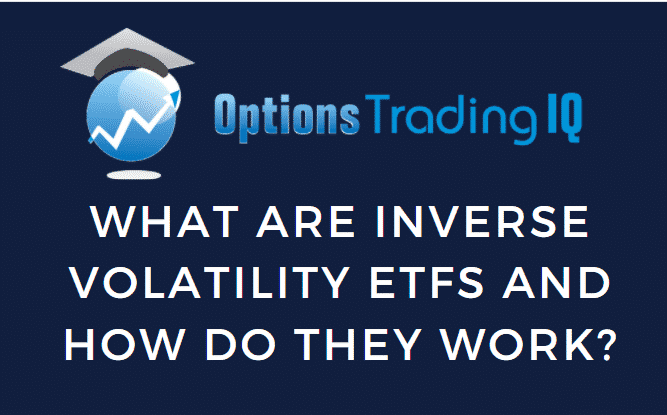

Today, we are looking at inverse volatility ETFs.
We will discuss what they are, how to find the best ETFs and how you can use them.
Let’s get started.
Contents
- Introduction
- How Do Inverse Volatility ETFs Work?
- Where Can You Find An Inverse Volatility ETF?
- Buying An Inverse Volatility ETF In 2021
- Are Inverse Volatility ETFs The Best Investment Option?
- Final Thoughts | Inverse Volatility ETFs
Introduction
If you’ve paid attention to the stock market, then you’ve probably come across exchange-traded funds (ETFs) at some point in time.
ETFs are generally considered to be extremely safe investments.
This article will look at inverse volatility ETFs today and explain why these types of funds can be slightly safer for investors.
Why would you want to purchase an inverse volatility ETF?
That is a fundamental question you need to understand to assess the pros and cons of owning this type of exchange-traded fund.
If experienced investors believe that the market will remain stable and the overall volatility is low, they usually buy inverse volatility ETFs.
Many different economic factors can play a role in these types of investments.
The unemployment rate, annual growth rate, and inflation rate can all significantly impact the effects of an inverse volatility ETF.

How Do Inverse Volatility ETFs Work?
The concept of an inverse volatility ETF is relatively simple.
These funds generally provide investors with direct exposure to future contracts that expire in the near future.
These contracts are connected to the Volatility Index VIX; the only other way investors could gain this type of direct exposure is to buy stock options directly.
Instead of acquiring options directly, investors can purchase an Inverse Volatility exchange-traded fund and take advantage of potential profits if they believe the overall market volatility will remain low.
Where Can You Find An Inverse Volatility ETF?
The most popular Inverse Volatility ETF is the ProShares Short VIX Short-Term Futures ETF (SVXY).
This fund receives large volumes from investors and has already provided more than 30% returns to investors in 2021.
Buying An Inverse Volatility ETF In 2021
The reasoning for the substantial returns is because the stock market has stabilized significantly in 2021 for many different reasons.
Many economic experts believe that the ‘coronavirus stock market rally of 2020’ has run out of steam as unemployment benefits and stimulus checks were helping to sustain that rally.
Some of the punishing effects are starting to fade into the stock market.
Those effects include higher inflation rates from government overspending and the lack of a stimulus bill to help motivate investors.
What does this mean for investors that are currently holding an Inverse Volatility ETF?
As previously mentioned, the stock market has stabilized, and market volatility has nearly disappeared completely.
This stable behavior is one of the significant reasons the ProShares Short VIX Short-Term Futures ETF has experienced substantial gains in 2021.
It’s hard to argue with the performance of this particular exchange-traded fund in the last few months, but the stock market will not remain stable forever.
There will come a time when volatility re-enters the stock market and when that happens, it’s likely that Inverse Volatility ETFs will struggle.
You’re probably wondering about whether it’s worth investing in an Inverse Volatility ETF; this is a fair question, and the truthful answer is that it can be an excellent investment for most investors when the time is right.
Lengthy periods of stability in the stock market will largely benefit these types of ETFs.
If you enter the market in a period of high uncertainty, the market’s volatility will rise.
Stocks equities will see significant price fluctuations and swing rapidly in short periods of time.
This market condition is not ideal for owning an Inverse Volatility ETF, and investors can face risks in this scenario.
Are Inverse Volatility ETFs The Best Investment Option?
Even when the market conditions are ideal for investing in an Inverse Volatility ETF, there is reason to believe that they might not be the best investment.
Many economic experts and investors believe that blue-chip stocks are more reliable during these types of market conditions.
In addition to consistent growth, blue-chip stocks often pay out dividends to all owners regularly.
With an Inverse Volatility ETF, you won’t be able to take advantage of this.
Depending on your specific investment objectives, dividends can play a major role in compounding your investment and expressing consistent growth over longer periods.
That doesn’t necessarily mean that Inverse Volatility ETFs is a wrong investment choice.
There just may be many other alternative investment options that can show greater returns and have additional benefits in the longer term.
Final Thoughts | Inverse Volatility ETFs
This guide has thoroughly discussed the concept of investing in Inverse Volatility ETFs.
At this stage, you should now have a better understanding of how they work and why you might want to utilize them in your portfolio.
Exchange-traded funds have a certain level of risk, just like any other investment. Inverse Volatility ETFs can only generate success in specific market conditions.
This concept can limit some investors from making money when the stock market is volatile.
Millions of investors continue to invest in inverse volatility ETFs every single year.
They have a reliable place in the stock market and can easily be part of many different investment strategies.
Trade safe!
Disclaimer: The information above is for educational purposes only and should not be treated as investment advice. The strategy presented would not be suitable for investors who are not familiar with exchange traded options. Any readers interested in this strategy should do their own research and seek advice from a licensed financial adviser.










